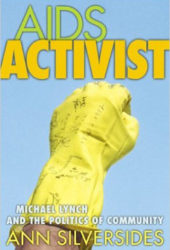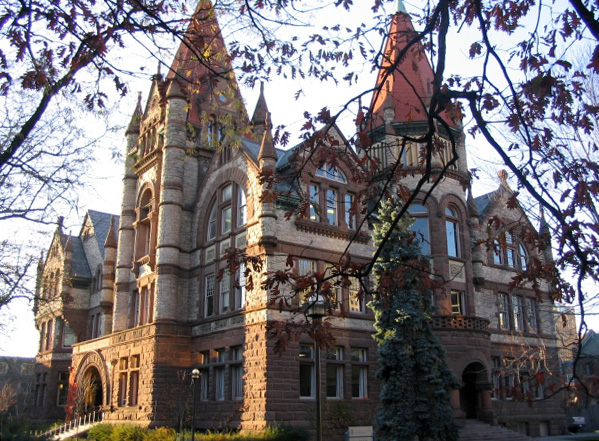 AIDS Activist:
AIDS Activist:
Michael Lynch and the Politics of Community
by Ann Silversides
Published by Between the Lines
Published May 1, 2003
History (biography)
288 pgs. • Find on Amazon.com
Reviewed by Stephen O. Murray
July 31, 2003
It is a strange experience to read a biography of someone one has known, especially a biography by someone who only knew the biographical subject posthumously.
In AIDS Activist: Michael Lynch and the Politics of Community, Ann Silversides is mostly writing about University of Toronto professor of English Michael Lynch (1945–1991) after I’d left Toronto and had only very occasional communication with him. She had access to his very intimate diaries and interviewed many people who knew him better than I did. I don’t question that she came to know Michael, particularly the AIDS activist aspect she foregrounds, far better than I ever did. Through his archived papers, Silversides had access to his self-doubts, something I never saw. I wouldn’t have characterized Michael Lynch as arrogant, but in the context of the Toronto Gay Academic Union of which he and I were founding members, he appeared very self-confident about whatever he was backing.
His research is so slighted by Silversides that the reader does not even learn what was the subject of his dissertation or who his mentors and dissertation supervisor(s) were. There are recurrent mentions of a book he wanted to write on homosexuality in 19th-century America that was to be followed by a biography of Walt Whitman. Neither book got written, although an interesting if not particularly groundbreaking article on “adhesiveness” was published in Victorian Studies. He presented a talk (later published in The Body Politic on the then-obscure figurativist painter Marsden Hartley (1877–1943) at GAU that was also very interesting but soon eclipsed by others’ work on Hartley.

I don’t know how Michael got tenure so quickly at a major research university without having published a book, particularly since his initial appointment was at the Catholic college (St. Michael’s) within the University of Toronto, and his becoming publicly gay was unacceptable (he moved from St. Michael’s to the English department at one of the satellite campuses, Erindale). And I learned nothing about his sponsorship and early promotion from Silversides’ book. I assume his glibness and self confidence served him well as a teacher of undergraduates. If he supervised graduate students, Silversides missed them.
Silversides records recurrent statements about wanting to be remembered for the book he wanted to write, but she also shows an inability to focus on what he saw as his life work. It may seem churlish to focus on the lack of production of someone who was cut down before his 46th birthday by HIV and who had been very ill before that. However, I am not prescribing what his ambition should have been but noting what it was: “He desperately wanted to complete and be remembered for a book” (p. 84).
Moreover, it is not that his activism took all his time. Michael tended to help get organizations started (including GAU in my time in Toronto and major Toronto AIDS organizations after I left) and then withdraw. He found time to edit the Gay Studies Newsletter of the Modern Language Association’s gay/lesbian caucus from 1980 to 1991, which something he did well but also something that many others could also have done if he had really tried to focus on his own research or poetizing.[1]A slender book of AIDS poems, These Waves of Dying Friends, was published in 1989. There were parts of a novel, an uncompleted manuscript on Wallace Stevens, etc. among his papers.
I think that Michael was a good journalist, drawing on his own experiences first as a gay father and then as a person with AIDS, and adept at getting difficult, large-egoed persons to get along. These guises are central to Silversides’ book. Her primary interest is in the history of AIDS organizing in Toronto. Her biographical approach to this topic probably overestimates Michael’s formative role, though I don’t doubt that he had one. As a history of the organizations, the biographical focus is a liability after the foundational period of his primary involvement.
With the intensive cooperation of Lynch’s son, Stefan, the paternity role is amply covered in the book, along with some of the succession of sexual partners, though the evolution of his relationship to the charming and productive microbiologist Bill Lewis that was the most sustained one other than his marriage, is inadequately chronicled (or at least remains mysterious).
Michael’s formative influences (intellectual and sexual) are slighted in this biography, as is his pre-AIDS gay activism. There is much interesting biographical material (some of it prurient) and much interesting documentation and recollection of Toronto AIDS organizing during the 1980s, but the book leaves out too much to be either a satisfactory biography or a satisfactory history.
published on epinions 31 July 2003
©2003, 2016, Stephen O. Murray

